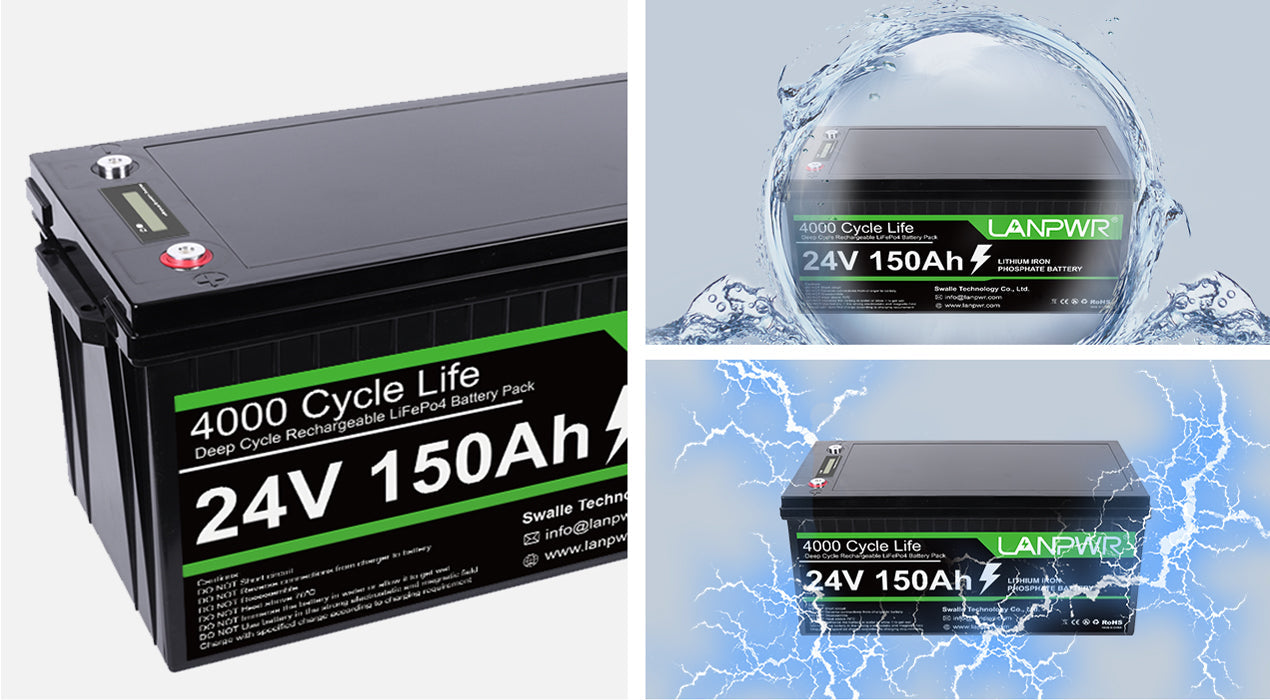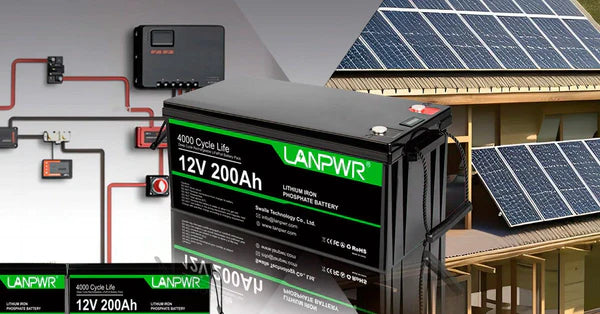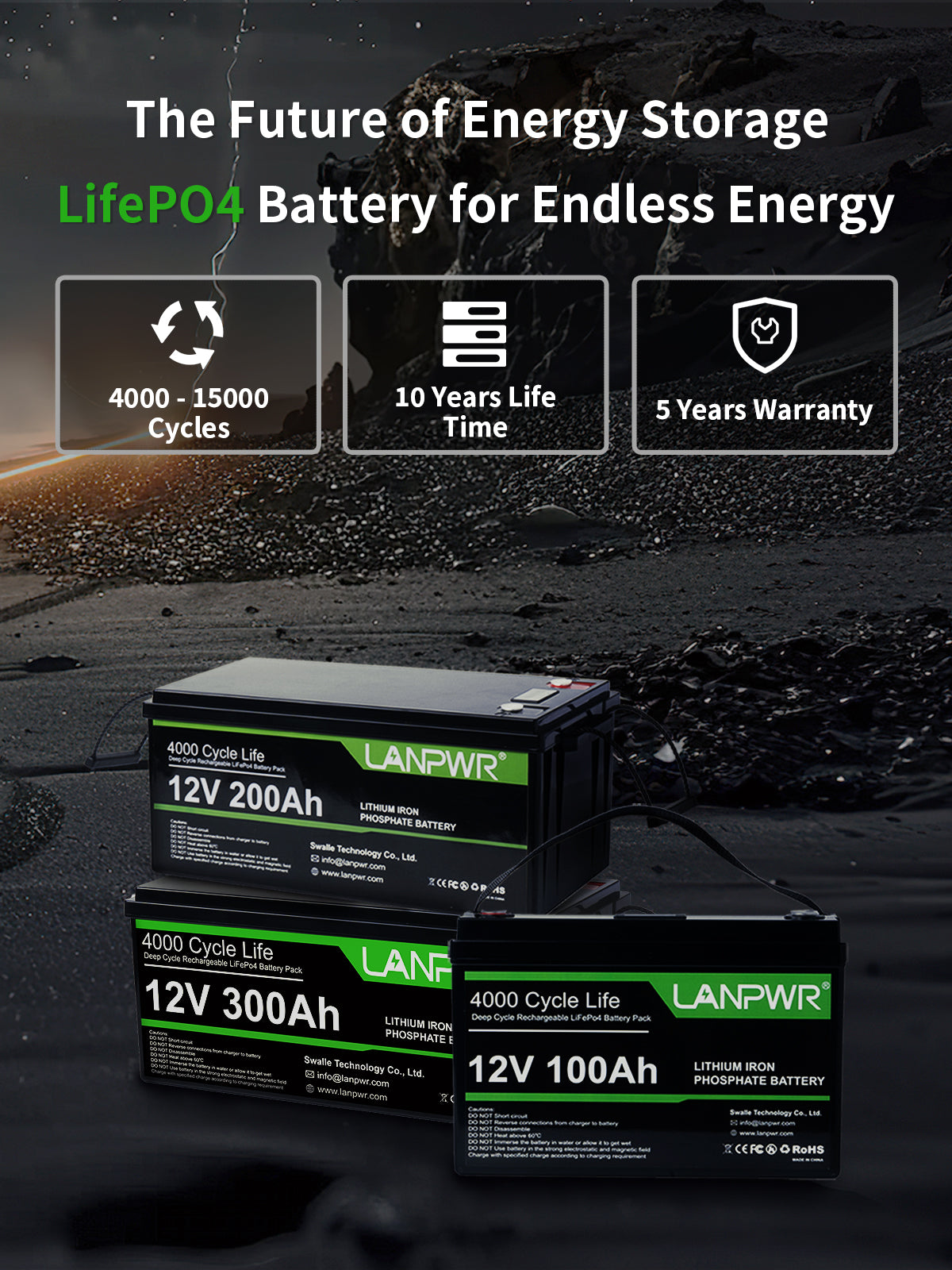Lithium Iron Phosphate(LiFePO4) batteries are the common choice of battery for energy storage due to their long cycle life, high safety such as no fire no explosion, and high reliability of other li-ion (lithium-ion) batteries. But though these are stout batteries, longevity means using them right. You can check in our Complete Guide For how to prolong your life cycle with a LiFePO4 battery you can stay updated about the correct steps and tips to let your LiFePO4 battery reach its maximum work life, so you will get the best value.
What is a LiFePO4 Battery?
LiFePO4 batteries are a type of lithium-ion rechargeable battery in which lithium iron phosphate serves as the cathode material. These are becoming a very popular alternative for their durability, safety, excellent lifecycle, and overall stability. Cylindrical batteries have a wide application range, such as in electric vehicles, solar storage, home energy storage solutions, power stations, etc.
Advantages of Using LiFePO4 Batteries
High Cycle Life: LiFePO4 batteries usually have more than 2000-5000 charge cycles, while compared with other lithium-ion batteries, it takes the overwhelming advantage.
Safety: They are less susceptible to overheating and thermal runaway, which makes them safer to handle.
High Energy Density and Cycle Efficiency - High energy density and charge/discharge efficiency.
Eco-friendly - As mentioned above, the long life and chemically stable structure of LiFePO4 batteries make it considerably more environmentally friendly than other battery chemistries.
5 Ways to Extend the LiFePO4 Battery Lifespan
- Proper Charging Practices
Use the Right Charger: Only ever charge with a dedicated LiFePO4 charger. If the battery is charged with the correct voltage and current, it will not overcharge and cause damage.
Avoid Overcharging: Therefore, overcharging a LiFePO4 battery can substantially cut the lifespan of your battery. Charge to no higher than the battery's maximum voltage instead of using chargers with built-in overcharge protection systems (generally around 3.65V per cell).
Charge at Moderate Rates: Charging the battery at a moderate rate (0.5C to 1C) is the best. Charging at higher rates generates more heat which reduces the battery life. If you have a 100Ah battery, for example, a charge at a 0.5C means charging at a 50A.
- Avoid Deep Discharges
Charge Level (SOC) monitoring: Do not use your LiFePO4 battery below 20% SOC. Deep discharges can put a strain on the cells of the battery which will shorten their life. Monitor and manage the SOC well, using a battery management system (BMS).
Set Proper Cut-Off Voltages: Be sure that the low voltage level is adjusted to prevent discharges from being too deep. A common LiFePO4 cell should be charged to a cut-off voltage of around 2.5V- 2.8V per cell.
- Temperature Management
Operating Temperatures - Ideally
Temperature Optimal Performance of LiFePO4 batteries 20°C to 30°C (68°F to 86°F) and perform best If exposed to severe temperatures (hot or cold), the lifespan of your battery may be decreased.
Avoid Overheating: Overheating is the source of thermal runaway and damages the cells of the battery. Provide adequate ventilation and cooling for these devices, particularly at high discharge rates and fast charging.
Cold Weather Precautions: Do not charge lithium-ion LiFePO4 batteries below 0°C (32°F) in cold environments If the temperatures are really cold the lithium can "plate" permanently damaging the battery. Battery Heaters / Pre-heating the Battery above Freezing Before Charging
- Maintenance and Monitoring
Regular Inspections: Occasional visual inspection of the battery for physical damage, corrosion, and swelling. Take care of any problems right away to prevent these problems from growing worse.
Balance the Cells: Cell balancing is a process of equalizing the charge in all the cells in the battery pack. This protects weaker cells from being overcharged or undercharged. Employ a BMS with Cell Balancing capabilities to facilitate the same.
Firmware Updates: Update: Battery - if it/your BMS has firmware, check that this is kept up to date. Firmware updates can optimize charging algorithms and improve safety features, which may extend battery performance and life.
- Storage Practices
Store at Partial Charge: If you plan to store your LiFePO4 battery for three months or longer, keep it at around 50% SOC. A battery that is completely charged or discharged while left unused for long periods can cause the battery to lose some of its capacity over time.
Cool, Dry Storage: Keep the battery in a dark, dry place without sunlight or wetness. The ideal storage temperature is 10°C to 25°C (50°F to 77°F).
Periodic Charging: If a battery should be placed into long-term storage, it should be checked and recharged as necessary to keep its SOC at 50% of its maximum for extended battery life. More than 10,000mAh Lithium-ion batteries are designed with numerous safety features that help to avoid deep discharge or overcharge during storage.
- Safe Handling and Usage
Avoid Physical Damage: Do not drop, puncture, or otherwise impact the battery as this can result in fire and injury. Physical damage combined with partial oxidation can also reduce cell safety's integrity.
Proper Installation: The battery is properly mounted in its application with proper hold-downs to secure the installation and supported to help absorb vibrations and shocks. Provide suitable mounting brackets or housings to provide some level of protection for the battery.
Quality Cables and Connectors can be utilized: When in doubt, always use good quality connectors and cables capable of handling whatever current is being sent through it. Bad connections mean resistance, which leads to heating and potential destruction.
Use Cases in the Real World and General Best Practices
Solar Energy Storage
Charge Control: A solar charge controller that is lithium battery-ready controlled of course with a solar controller that is suited for use with LiFePO4 batteries. It should come with temperature compensation and overcharge protection.
Sizing the Battery Bank: Sizing Your Battery Bank Correctly To Fit Your Storage Requirements Both of these have consequences for the performance and life of the battery.
Electric Vehicles (EVs) Asia-Pacific, the Regenerative Braking Management Market by System Type involved the regenerative braking system
Be sure that the regenerative breaking will not fry the BMS. High current spikes are inevitable with regenerative braking and it must be controlled to safeguard the battery
Battery Cooling Systems: Again, add on cooling systems to then reduce the heat generated during high discharge rates and fast charging sessions.
Portable Power Stations
Multi-Stage Charging: Leverage multi-stage charging profiles for better battery performance. This maintains the battery must be done with bulk charging stage, absorption, and float charging stages, generally, it must be tried in three stages.
Inverter Compatibility: Make sure that the inverter connected to the power station is compatible with the Lithium Iron Phosphate batteries (LiFePO4), especially voltage and current specifications.
Optimizing LiFePO4 Battery: A Case Study
Scenario
This off-grid cabin is solar-powered and is stored in a 48-volt LiFePO4 battery bank. The goal is to achieve the longest duration the battery will allow while providing a constant backup power source for lighting, appliances, and electronic devices.
Implementation
Proper Sizing: It is also installed with a properly sized battery bank to be able to keep longer required power for the cabin to keep stored energy for up to days without fully discharging it.
Efficient Charging: Following, active use of a solar charge controller with temperature compensation to manage the charging process. The controller makes sure your batteries are charged at desired levels and, if you have set the limits, will prevent overcharge.
Temperature Management: The battery bank is housed in a well-ventilated, insulated solar battery enclosure to ensure proper temperatures. During high charge/discharge times, a small fan is used to increase cooling
Regular Monitoring: Real-Time Monitoring: This tracks the state of charge, voltage, and temperature of the battery bank via the BMS (Battery Management System). If there is any anomaly then it will alert the owner.
Routine Maintenance: Check battery terminals and connections for corrosion and tightness monthly. The BMS firmware is updated as needed.
Results
Following these best practices has resulted in only very minor reductions in capacity for the cabin's LiFePO4 battery bank after 2 years of operation. The owner of the mall has sold the power there and says that it is more reliable and costs less to maintain, a claim that he attributes to running the system properly and making sure to monitor it regularly.
Summary
A good way to start extending the life of your LiFePO4 battery is to follow the correct charging and discharging practices, pay attention to temperature, perform the required regular maintenance, and take precautions. Follow these and your LiFePO4 battery will give you years of reliable service which gives excellent value for money in the long run.
LiFePO4 batteries are used in the storage of solar energy electrical power, lithium-ion electric cars, power tools, and also as backup power to power a range of portable stations to make it more durable, safer, cleaner, and more efficient than lead-acid batteries. Being aware of certain best practices and using all of these advantages correctly will get the most out of your LiFePO4 battery














Leave a comment
This site is protected by hCaptcha and the hCaptcha Privacy Policy and Terms of Service apply.